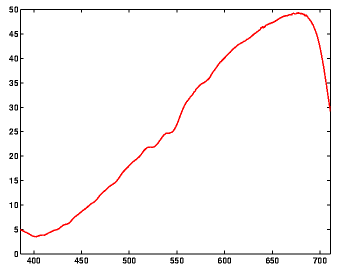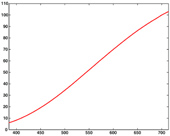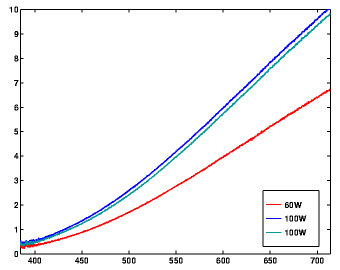
This study shows that bright light and blue light affect the cortisol response in contrast to dim light and red light conditions. An increase in the cortisol concentration of blue light compared to red light (Study 2) and dim light was found. Study 1 revealed an increase in the saliva cortisol concentration after bright light exposure compared to dim light.

Results from repeated measures ANOVA confirm that light exposure affects the cortisol concentration. A sample of 23 (Study 1) and 26 (Study 2) healthy males were randomly assigned to: 1) bright white light (414 lux) and 2) dim darkened light (<2 lux) as well as 3) red light (235 lux) and 4) blue light (201 lux) exposure conditions. Therefore, one hour of standardized exposure LED light at different intensities and the spectral composition during the post-awakening phase at 7:30 were compared. Research studies on LED light exposure and cortisol are inconsistent and not comparable due to different types of light, exposure times, and sample sizes. Morning exposure to short-wavelength light may be a simple, yet practical way to better prepare adolescents for an active day. Exposure to short-wavelength light in the morning significantly enhanced CAR compared to dim light. Saliva samples were collected every 20 minutes to assess CAR. Eighteen adolescents aged 12-17 years were exposed to dim light or to 40 lux (0.401 W/m(2)) of 470-nm peaking light for 80 minutes after awakening. The experimental sessions differed in terms of the light exposure scenarios experienced during the evening prior to sleeping in the laboratory and during the morning after waking from a 4.5-hour sleep opportunity. The study ran over the course of three overnight sessions, at least one week apart. The present study is a secondary analysis of a larger study investigating the impact of short-wavelength (λ(max) ≈ 470 nm) light on CAR in adolescents who were sleep restricted.

In addition, cortisol levels exhibit a sharp peak in concentration within the first hour after waking this is known as the cortisol awakening response (CAR). Updated MaBug fixes.Levels of cortisol, a hormone produced by the adrenal gland, follow a daily, 24-hour rhythm with concentrations reaching a minimum in the evening and a peak near rising time. Updated MaNow supports saving search queries from PubMed and Google Scholar to My Folders! Look for the DeepDyve button next to your search results to add an article to a folder youĪs always, find the articles that are available to read on DeepDyve by looking for the orange 'available' Updated ApYou can now keep track of any article you find in PubMed or Google Scholar in Updated ApUse DeepDyve to automatically keep track of what documents were interesting during your searches on PubMedĪnd Google Scholar! Find your combined document viewing history in the updated Updated Bug fixes and performance improvements. Updated See your Recent Activity directly from the popup!Īlso included: various bug fixes and improvements for automatically saving Recent Activity.

Updated Updating popup to properly display Science Direct searches and articles in your Recent Activity Updated Adding support for Science Direct searches and articles in your Recent Activity Updated Bug fixes and minor improvements to metadata collection for Recent Activity.


 0 kommentar(er)
0 kommentar(er)
